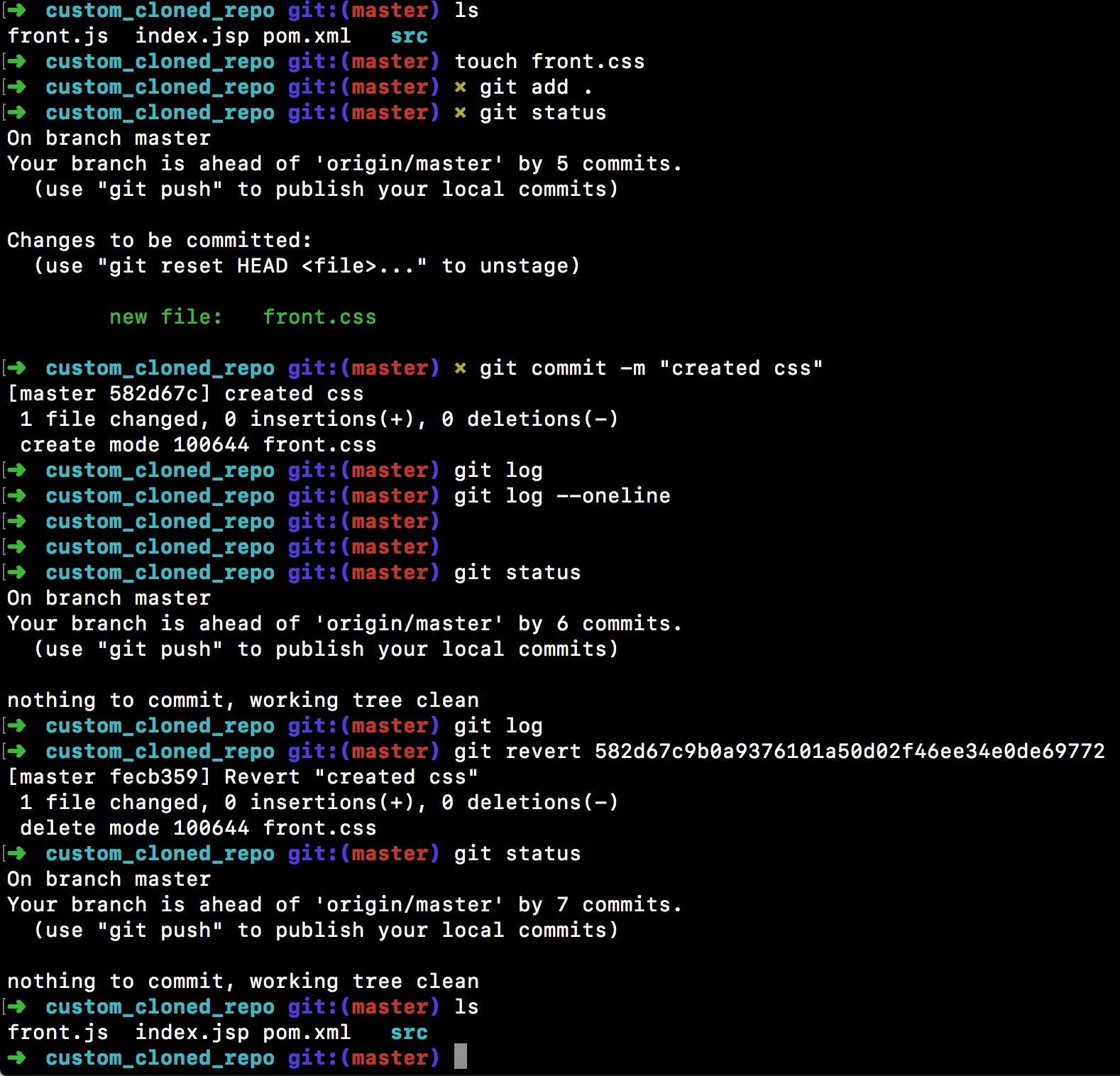
The most recent commit on our currently checked-out branch is called the HEAD. For example, HEAD~2 will reset our repository to the second commit before our HEAD. We can also specify the commit relative to our current HEAD by using the HEAD~n notation. We can use the hash of the commit point to which we want to roll back. The general syntax of using this command is shown below. This option should be used carefully, as we can lose unsaved changes. The -hard option will undo changes from the repository, the staging area, and the working directory. This is also the default mode used by Git Reset. The -mixed mode will undo changes made to the repository and the staging area. But it will keep the staging area and the working directory as it is. It works by changing the position of our HEAD to point to the previous commits. The -soft mode is used to reset changes made to the repository. Git Reset essentially rewrites the history of our project. Git Reset has three modes - soft, hard and mixed. These changes could be present in the repository, the staging area, or the working directory. The Git Reset command can be used to undo changes.
#RESET FILE TO MASTER GIT HOW TO#
Let's learn how to use this command to reset our repository. Git provides us with a very powerful command called Git Reset that can help us undo changes in our repository. This could be making incorrect commits, or making commits on the wrong branches, or accidentally staging files that we don't need in the next commit.
#RESET FILE TO MASTER GIT FREE#
If you have any suggestion, please feel free to leave a comment below.A lot of times, we will end up making changes in our repository that we don't need. gitignore in VSCode, Fix Git error “fatal: Authentication failed” or accept all current/incoming changes in Git. We’ve also written a few other guides for Git, such as. We hope that the article helped you learned how to quickly reset a file to master branch in Git.
#RESET FILE TO MASTER GIT CODE#
git commit -m 'a random message' Code language: Shell Session ( shell )

Once you’re done reviewing differences, you can commit the changes to the repository like you usually do. To see what changes were reset, you can run the following command to see the difference, git diff -cached Code language: Shell Session ( shell )

~1 here is reference to the commit’s first parent, more info.Īlternatively, you can also leave the commit hash out, for example, go back to the most recent commit (the HEAD): git checkout - path/to/your/file Code language: Shell Session ( shell ) Commit changes after resetĪt this point, the changes in the file are not commited just yet. git checkout ~1 - path/to/file Code language: Shell Session ( shell ) You can use the following syntax to do that. In most cases you want to checkout to the commit before the most recent ones. You can use the following command to reset a file to its previous version in commit commit_id (which git will automatically correlate it to the master branch) git checkout - Code language: Shell Session ( shell )ĭo note that there are two dashes followed by a space in the command above. The - part tells git to recognize anything after it as filenames (not branch name or switches). The output may look something like below. Please note that you can drop the -oneline flag, but the output is going to be significantly longer and harder to get an overview of the branch. Remember to switch to your desired branch using git checkout before doing this. In case you don’t use Github or prefer using git CLI, you can run the following command to get all the commit ID as well as commit description right in the terminal. Either write it down or copy that commit ID to the clipboard since we will need to put it in the command line later. Once you navigate to the file, in the upper right corner of the file preview page, you will see a 7 digit commit ID and a date.

If you’re using Github, you can easily find this information by browsing the repository using the web interface.įirst you need to go to the repository on GitHub, choose a branch, a commit and find the file that you want to revert. Those information includes the files diff check results, date, time, name/address of the commiter, etc. Git identifies every commit by an ID, which is SHA-1 hash of important information about the commit. 3 Commit changes after reset Find the commit ID


 0 kommentar(er)
0 kommentar(er)
